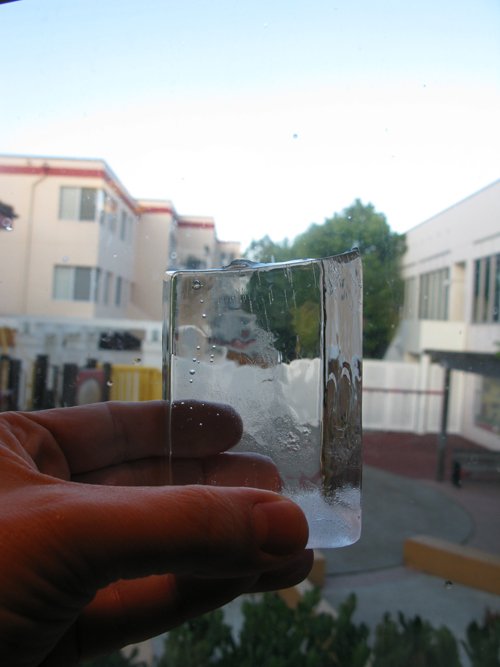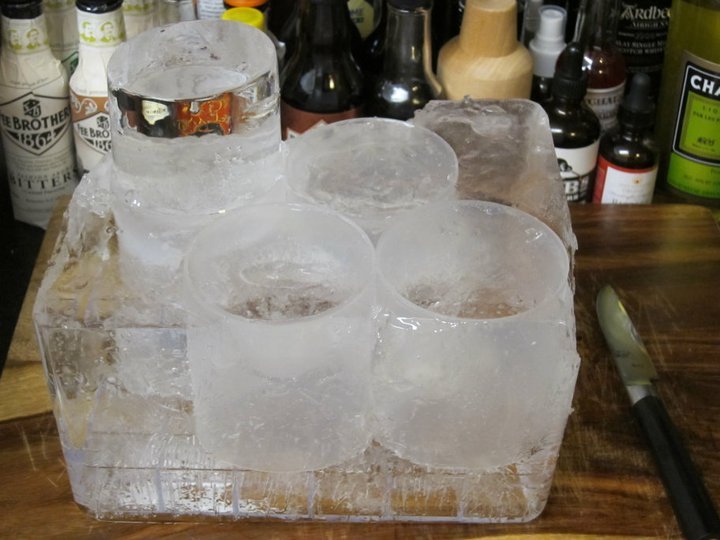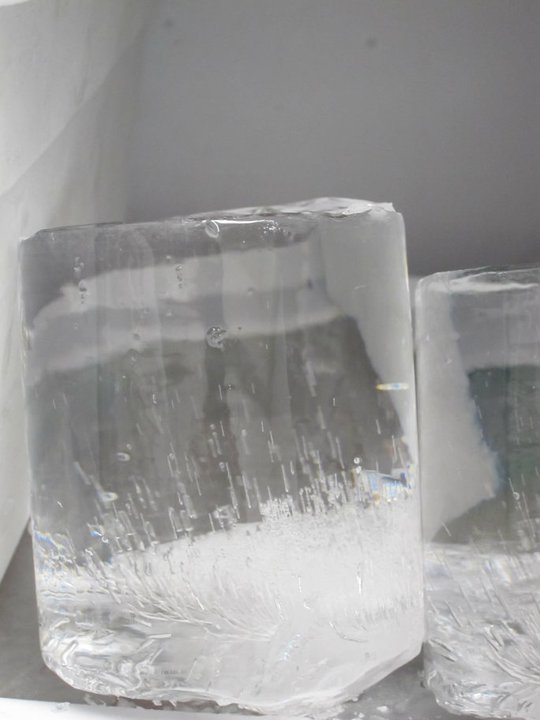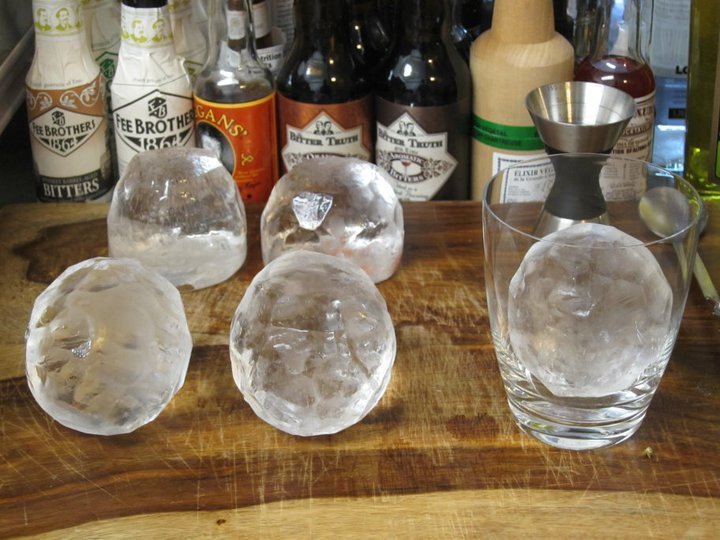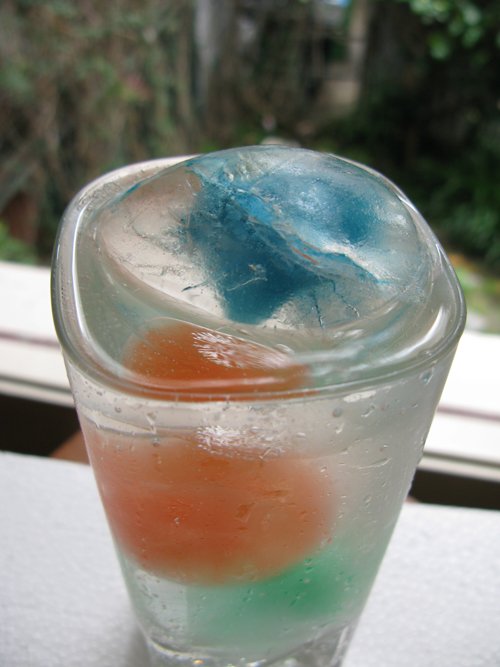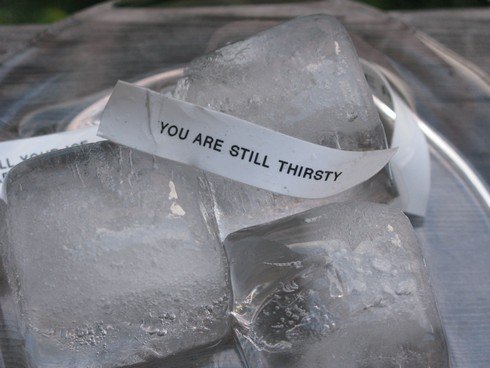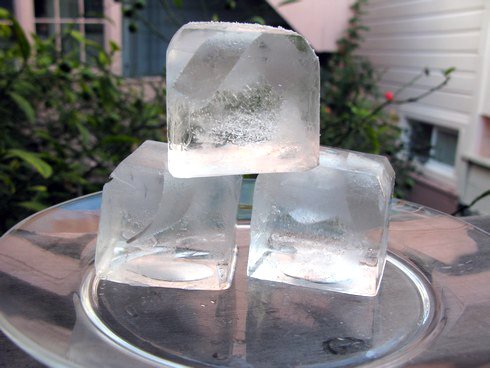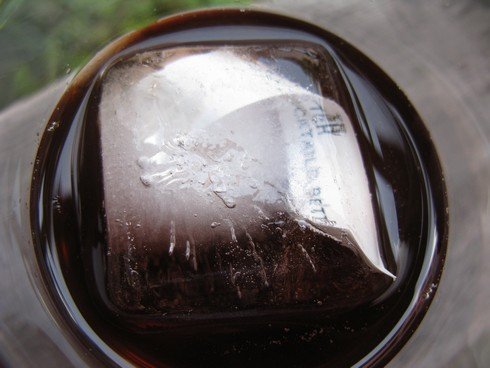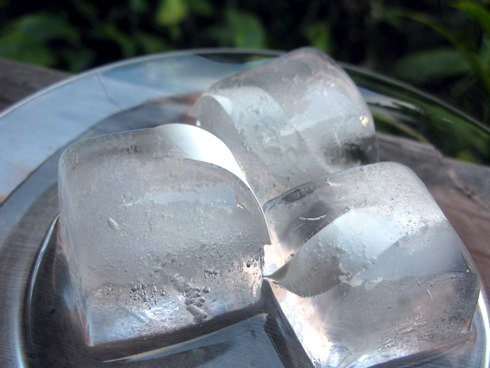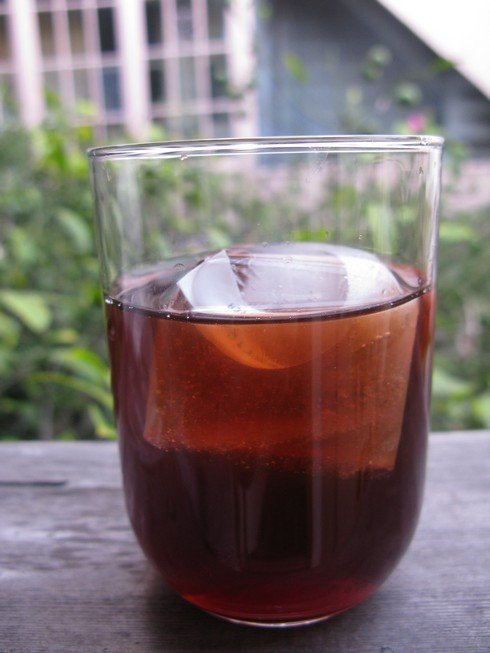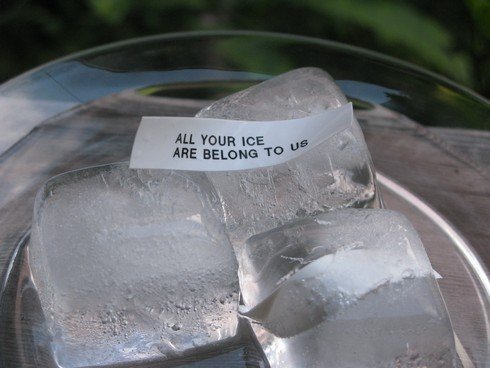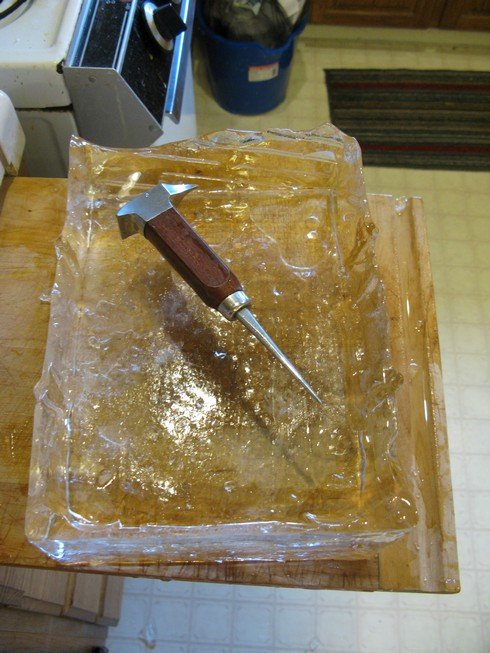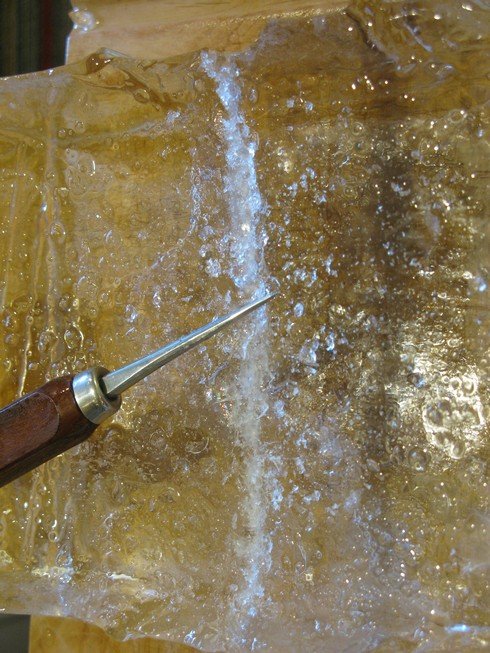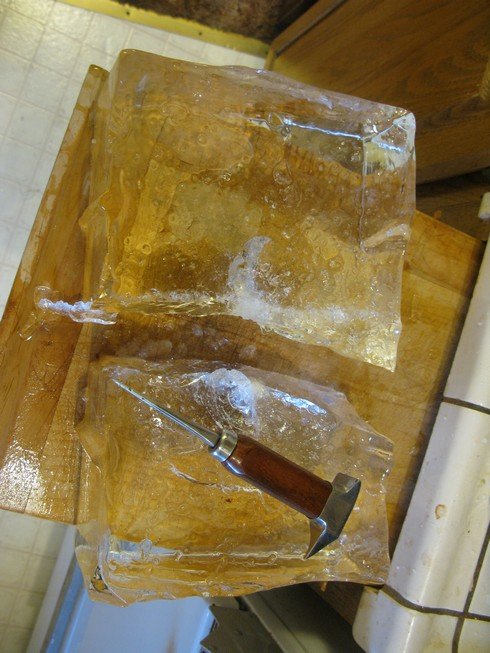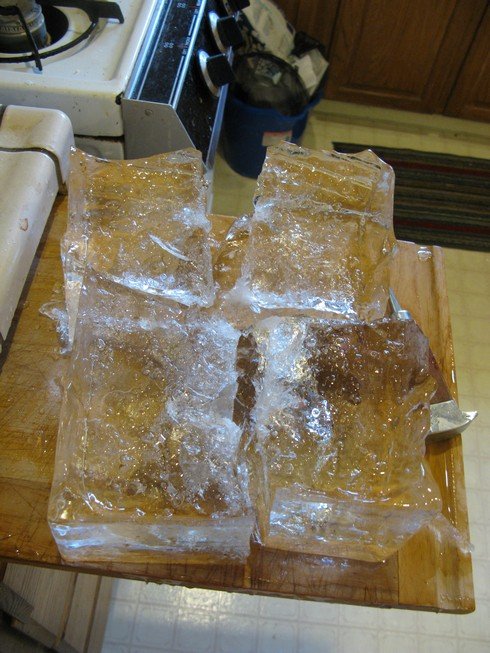Directional Freezing is a simple method to make crystal clear ice by controlling the direction that water freezes. It was first explained here on Alcademics.com by Camper English (me) in December 2009 after months of experiments. The method has been written about in books, used in commercial products, and is employed in many small cocktail bars around the world.
The Directional Freezing method is: Allow water to freeze into ice from only one direction (one side of a container) and the ice will be clear until the very last part to freeze. The last part to freeze (if allowed to freeze at all) will be cloudy.
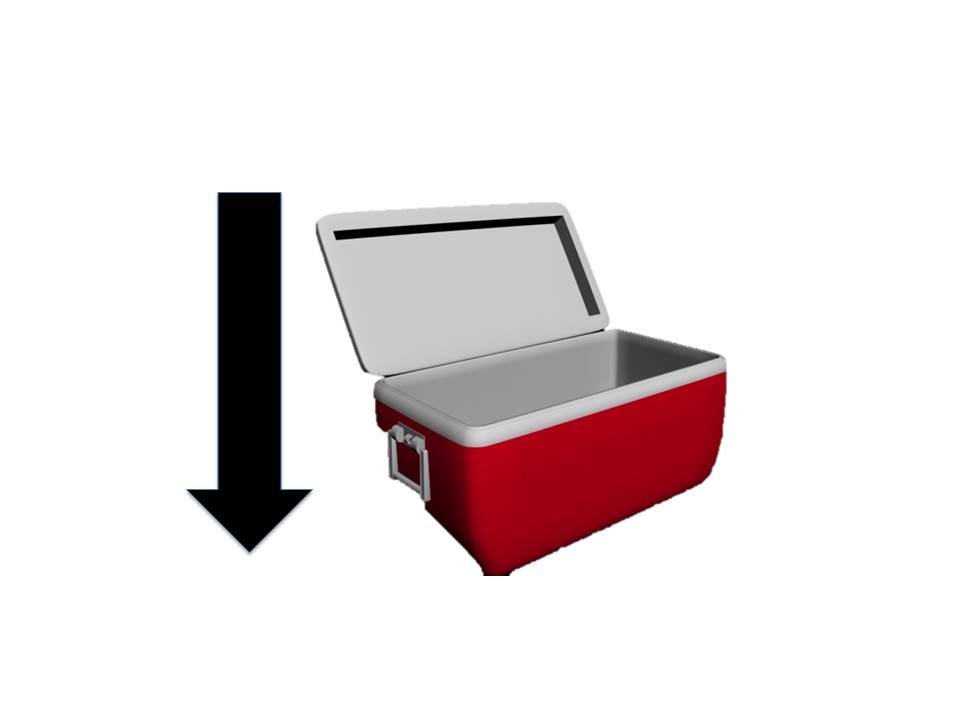 The simplest (and original) way to make a clear ice block by directional freezing is to fill a hard-sided picnic cooler with water, place it in a freezer, and allow it to freeze with the cooler's top off. The water will only freeze into ice from the top-down, and only the last 25% or so of the ice block that forms will be cloudy. If the block is removed from the freezer before this point, one will have a perfectly clear slab of ice. Otherwise, the bottom cloudy portion of the ice block can be cut off from the clear part.
The simplest (and original) way to make a clear ice block by directional freezing is to fill a hard-sided picnic cooler with water, place it in a freezer, and allow it to freeze with the cooler's top off. The water will only freeze into ice from the top-down, and only the last 25% or so of the ice block that forms will be cloudy. If the block is removed from the freezer before this point, one will have a perfectly clear slab of ice. Otherwise, the bottom cloudy portion of the ice block can be cut off from the clear part.
How Traditional Ice Cubes Freeze and Why They Are Cloudy
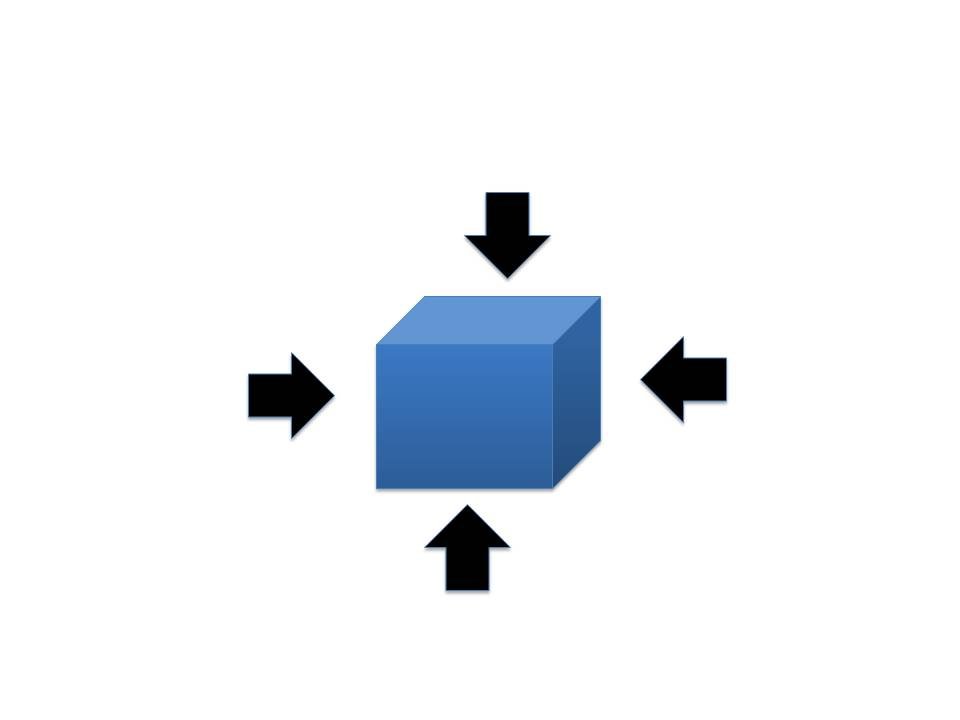 In a traditional ice cube tray, which is not insulated on any side, cool air hits all sides of the tray. Ice forms on the top, bottom, and sides, and freezes from the outside toward the center. It is the center part of an ice cube where it is cloudy and cracked (the cracking through pressure because ice expands as it freezes), while the outsides are typically clear.
In a traditional ice cube tray, which is not insulated on any side, cool air hits all sides of the tray. Ice forms on the top, bottom, and sides, and freezes from the outside toward the center. It is the center part of an ice cube where it is cloudy and cracked (the cracking through pressure because ice expands as it freezes), while the outsides are typically clear.
We say that ice wants to freeze into a perfect crystal lattice (though want isn't the proper term) and trapped impurities and air prevent it from doing so. When water freezes, it pushes any trapped air and impurities away from the first part to freeze. In a traditional ice cube this is towards the center of the cube. Using directional freezing, it pushes the air/impurities/increase in pressure towards the bottom of insulated cooler (or the last part of any controlled-direction freezing container).
Further Reading
This link to the index of ice experiments on Alcademics lists just about everything myself and Alcademics readers have tried to make clear ice: experiments that failed (such as using boiled water), how to make clear ice cubes, how to make clear ice balls, and using other shapes and containers to save space in the freezer.

